
Have you ever fallen down the “How It’s Made” rabbit hole on YouTube? I have, several times.
It might seem weird to spend 30 minutes enthralled by how objects like pencils, ice cream sandwiches, and basketballs are manufactured. But as a marketing manager, there’s a lot you can learn from them about how literal well-oiled machines build new products.
Especially if you and your team ever get overwhelmed by how much editorial content you need to create each month.
Now, what does manufacturing have to do with marketing and creating content?
It’s all about the workflow.
The machinery in those videos are all custom-created and programmed to automatically churn out high quality products seamlessly. And just like them, your marketing teams needs to be able to seamlessly churn out high quality content that moves your business forward.
They key to doing that is creating a custom-fit editorial workflow for your own team.
In this guide, you’ll learn:
- What makes up a good editorial workflow
- Why a strategic workflow is key to meeting your goals
- How to plan an editorial workflow that makes meeting deadlines easy
Let’s get started, and before you know it, your workflow will be a well-oiled machine worthy of its own TV feature!
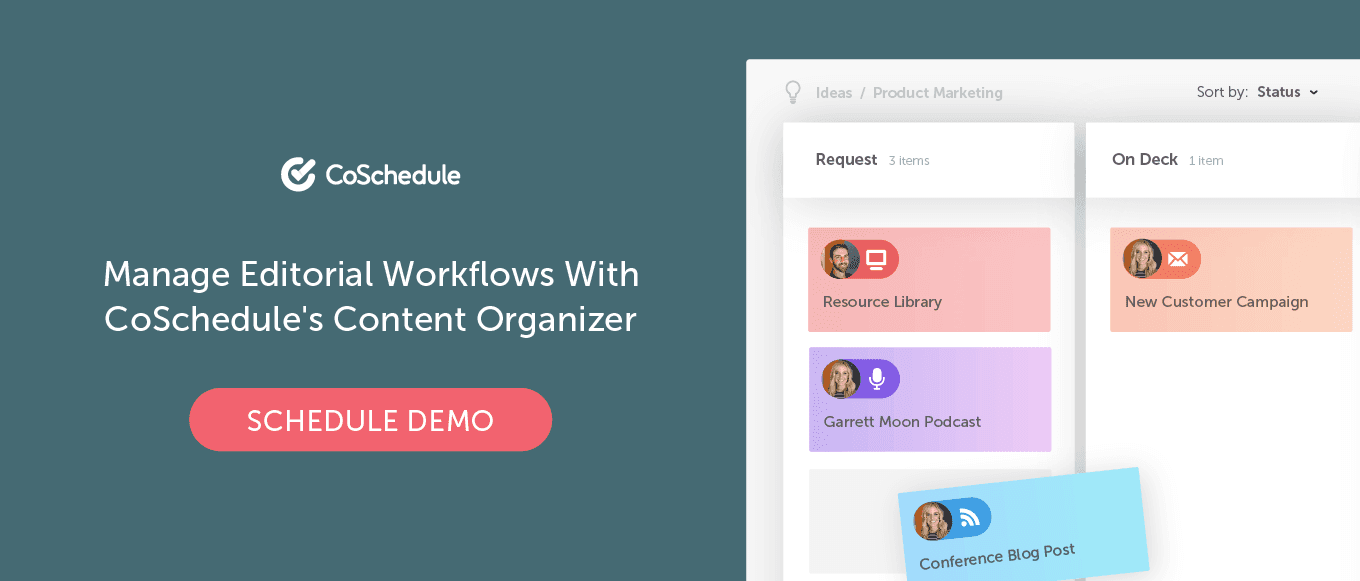
Download Your Editorial Workflow Checklist Template
Make organizing and managing editorial workflows simple with this pair of checklist templates. There are options for both Word and Excel depending on which your prefer. Download them now:
What is an Editorial Workflow?
Simply put,
an editorial workflow is the steps you take to publish a piece of content, like an article or blog post. All of the tasks, discussions, researching, writing, and more involved involved in the process, from ideation to promotion, make up your workflow.
And
it’s what makes your content marketing strategy actually happen and brings your editorial calendar to life.
In his best-selling book,
Atomic Habits,
James Clear says, “You do not rise to the level of your goals. You fall to the level of your systems.” Your editorial workflow is the system your content goals rely on.
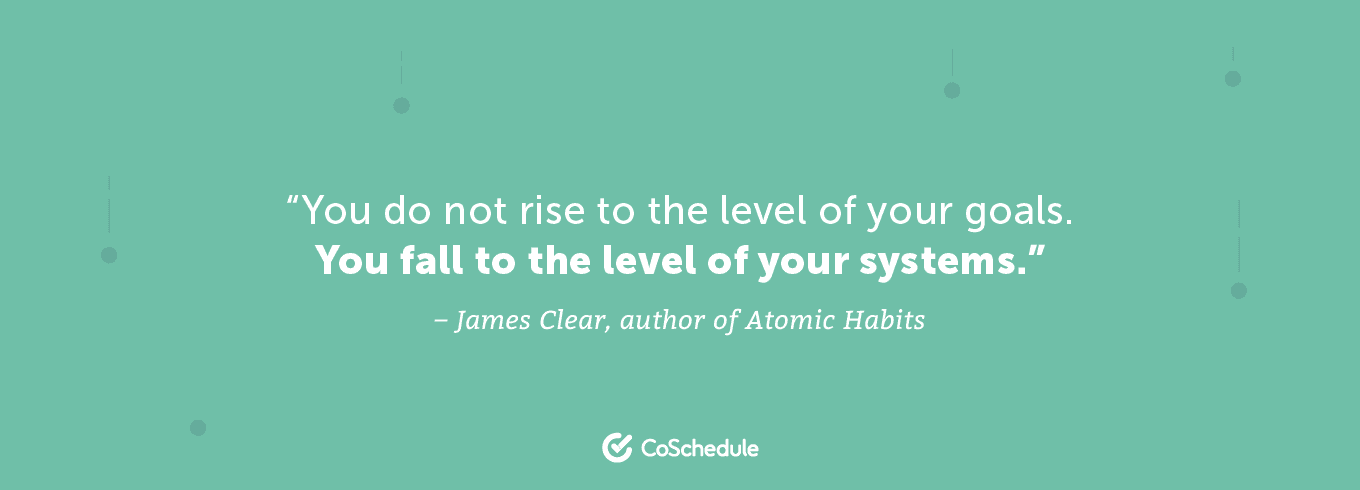
It’s one thing to sit down and brainstorm an advanced,
multi-channel content marketing strategy with big goals to drive big revenue for your business. It’s another to actually make it happen.
“Making it happen” is what your editorial workflow is for.
If you content marketing strategy is a map with your destination circled in thick red pen, your workflow is the turn-by-turn directions for getting there. The detailed stuff, like “make a slight right in 0.2 miles” that can be missed way too easily.

[Tweet "How to Plan an Effective Editorial Workflow in 4 Steps (Template)" by @thatbberg via @coschedule]
Why Optimize Your Editorial Workflow?
Whether you realize it or not, you have an editorial workflow. It’s simply the way your content gets published.
However, if you’ve never given it much thought or attention, your team’s workflow is likely undefined, unclear, and unhelpful. It probably changes from article to article, and steps are missed or completed out of order.
That disorganization and lack of clarity costs your team time, energy, and results.
But when you take the time to define, document, and optimize your production process:
- Your team members will always know what work they’re responsible for, and when they need to complete it by.
- They don’t need to spend time figuring out the right process from scratch for each piece of content they produce.
- It becomes easier to scale editorial output without creating mass chaos and confusion.
And ultimately, with all of that friction removed from the editorial process, your team will be able to create, publish, and promote content faster and more easily.
It’s every marketer’s dream, but all too rarely their reality.
In the
State of Marketing Strategy Report, only 16% of respondents said their entire marketing strategy was documented. Without that information, any workflows they do create might not even be the best ones.
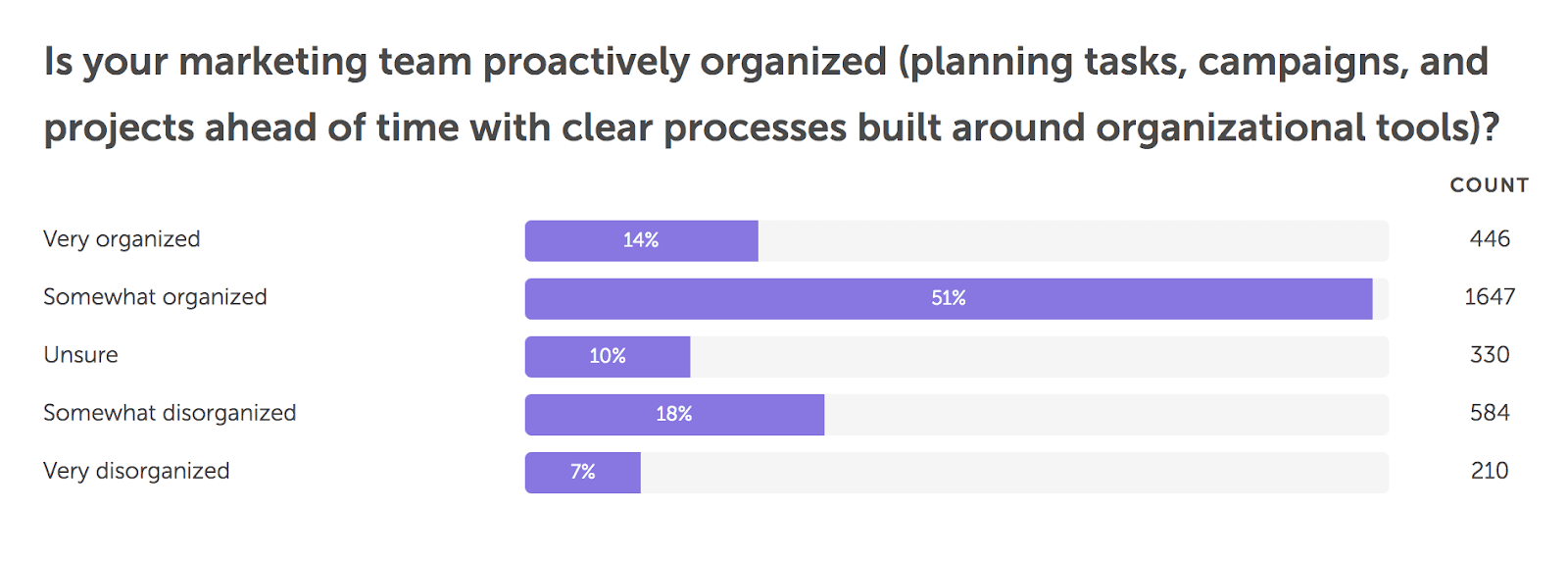
But with 65% of respondents describing their marketing team as somewhat or very organized, there’s hope. It’s simply a matter of making the decisions now that will save your team time and energy later.
Here’s how to create the perfect editorial workflow to do that, one custom-made for your team and its goals.
How to Plan an Effective Editorial Workflow
Step 1: Identify Each Step of the Process
The first thing you need to do when planning your ideal workflow is to meet with your team and agree on the overall process of events. You’ll want to brainstorm and list out every task and action that’s involved in producing a piece of content, from start to finish.
This should go beyond content creation itself to include steps like preparation, research, and promotion too.
If it helps you wrangle a complex process, you can group the tasks into larger workflow phases, like:
- Phase 1: content strategy (calendar planning, SEO keyword research, selecting a CTA)
- Phase 2: content creation (outlining, writing, graphic design)
- Phase 3: content promotion (optimization, publishing, distribution)
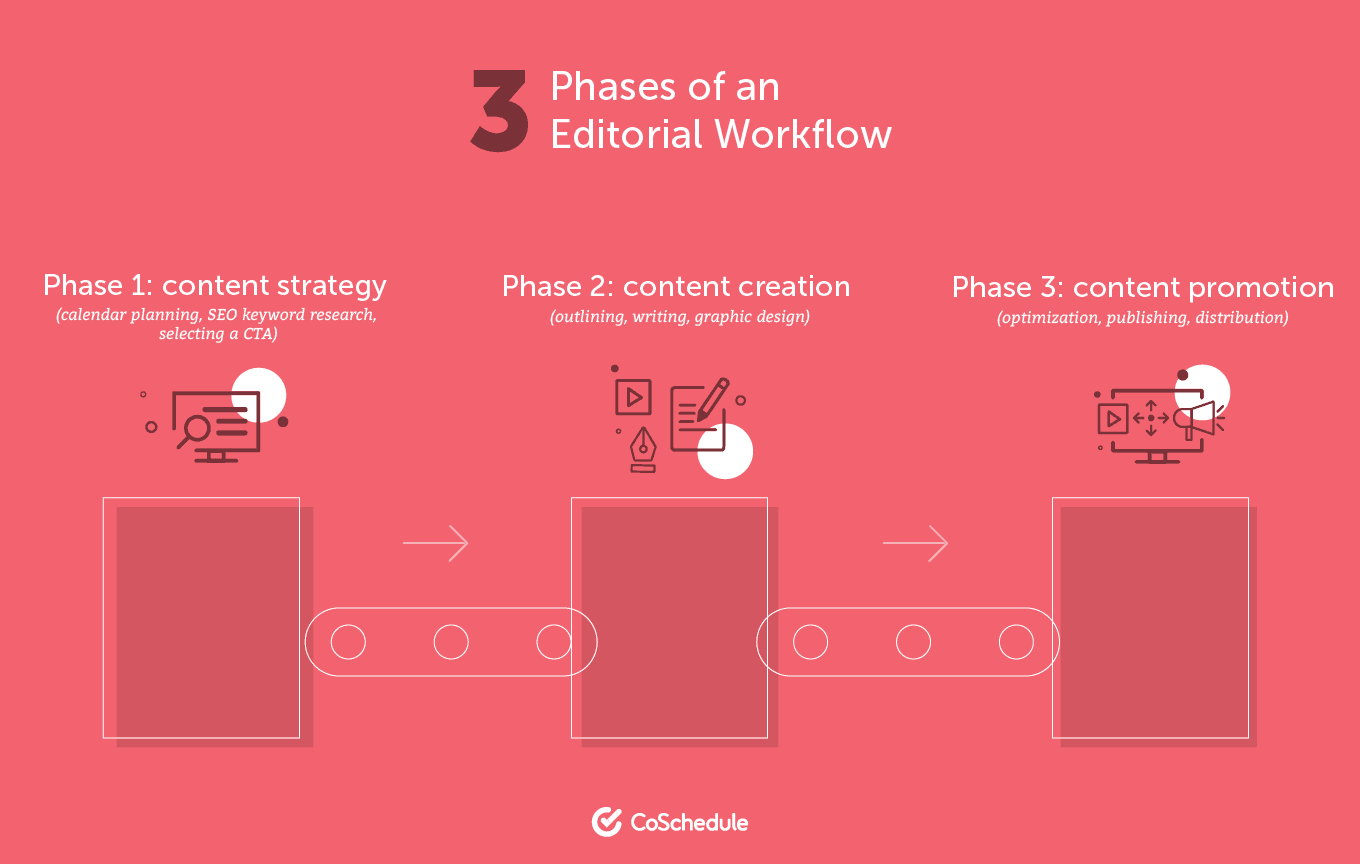
Marketing is so much more than simply publishing content, but many struggling marketing teams are only paying attention to the publish dates. This leaves team members scrambling to meet deadlines, no matter how far out the content calendar is planned.
Once your workflow is decided on, these small steps will become tasks and to-dos in your marketing calendar or project management system. For example,
in CoSchedule you can create different task templates to quickly apply the editorial checklist to any relevant content projects:
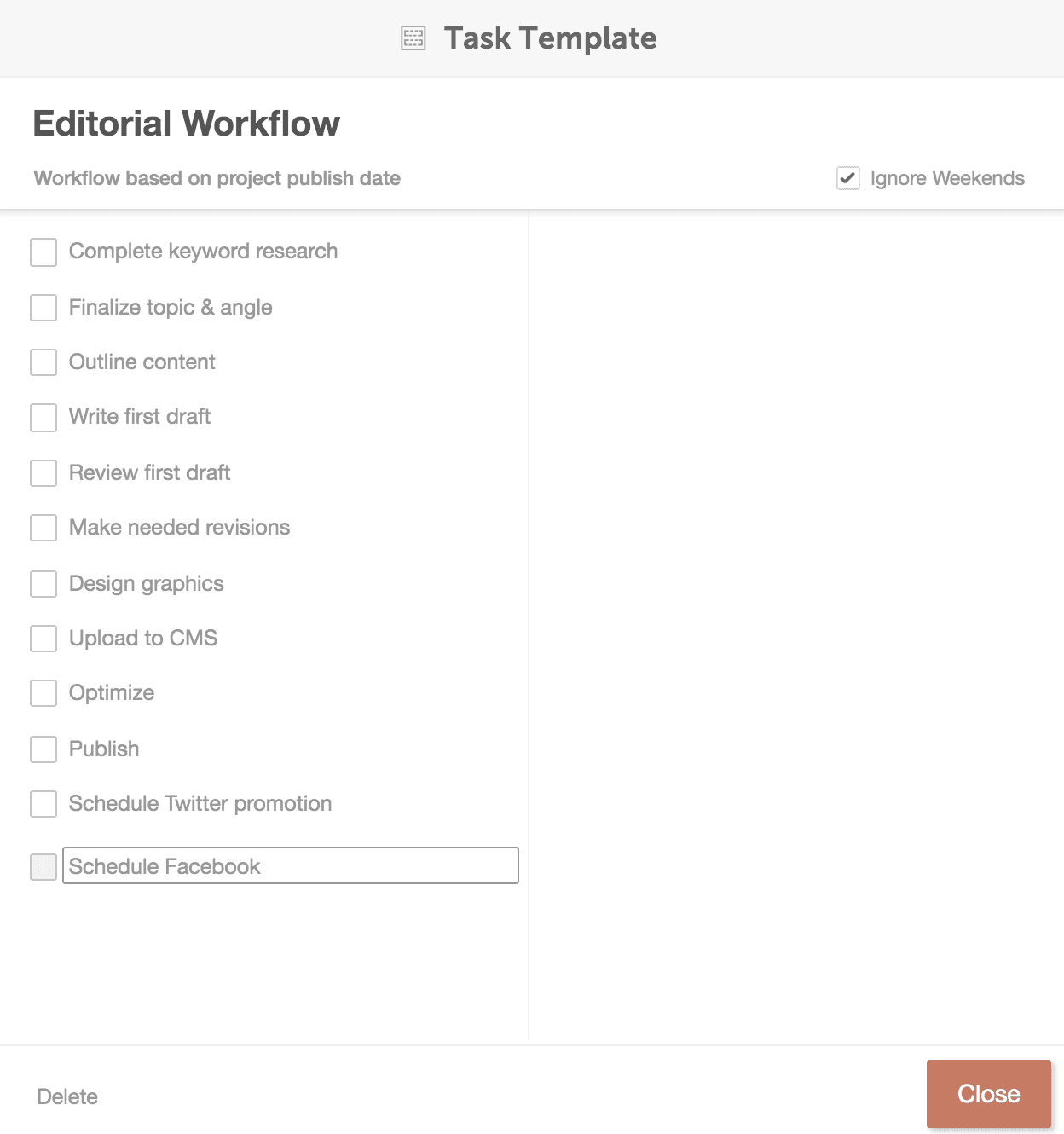
Focus on identifying the tasks your team is already doing, not everything you
could be doing. Remember, we’re organizing and optimizing your existing process before you try to scale up and start doing more.
Step 2: Assign Ownership for Each Step
Once you’ve eliminated any uncertainty over which steps are needed to publish editorial content, it’s time to tackle any uncertainty as to who does what as well.
Especially on larger teams that have more than one person in each role or position, small but important tasks like reviewing a blog post before it goes live can fall through the cracks. It’s the all-too-common problem of everyone assuming someone else “has it covered.”
Never assume someone has it covered, ensure that someone does.
This means assigning ownership and responsibility over each step of the editorial workflow to someone on your marketing team.
Go through each task identified in step 1 and agree on which team member will be responsible for executing it. Most of it will be pretty straightforward. For example, you can easily agree that it makes sense for:
- Your content strategist to perform SEO research and finalize topics, along with reviewing the writer’s drafts.
- Your content writer to write the first draft and complete revisions.
- Your graphic designer to create the post and social media graphics.
- Your social media manager to schedule the promotional posts.
However, other tasks will fall into more of a grey area.
For example, who uploads the content into your CMS after revisions, the writer or strategist? And who writes the promotional copy? That could easily be under the domain of your writer or social media manager.
Talk it out with your team now and agree on who will “own” each task now to avoid confusion and missed deadlines later.
Once these roles have been clarified, you can incorporate them into
your marketing checklist from step 1. For example, your templates can include who each task is assigned to:
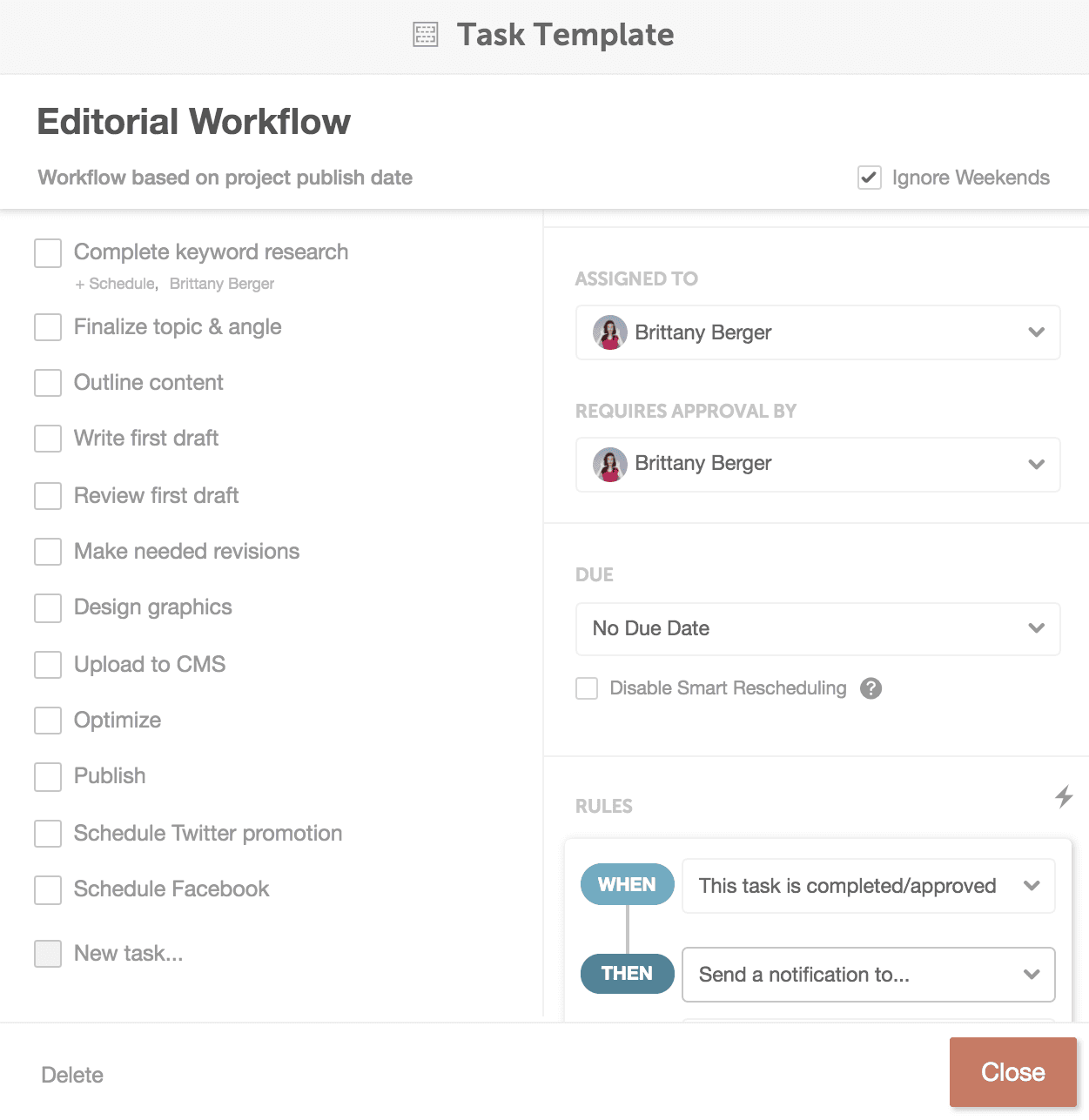
Additionally, you can also let team members know when work is coming down the pipeline towards them by sending notifications, making them the “project owner,” or tagging them in comments.
Step 3: Map Out Your Timeline
You’re almost done the prep work, I promise. You’re so close to having an organized, streamlined editorial workflow!
You’ve now answered two of the major questions involved: the “what” and the “who.” The last thing to cover is “when.”
Most marketers only have a content calendar of when new pieces are being published. And while your editorial is one of your most important assets, it only tells one part of the story. Editorial calendars show when content will be published. But as we’ve talked about, there are so many more steps involved in your workflow.
You need to have deadlines and due dates for those, along with the final publish date.
In this step, map out the actual flow and timeline of creating a piece of editorial, taking into account things like:
- How long each step takes (some will understandably require more time than others)
- The order tasks need to be completed in
- Any dependencies (for example, can the designer start working on certain graphics while the copy is still in drafting, or do they need the full draft?)
There’s no “right” order or timeline, it will all depend on how your team works. This is why checklist templates can be highly customized.
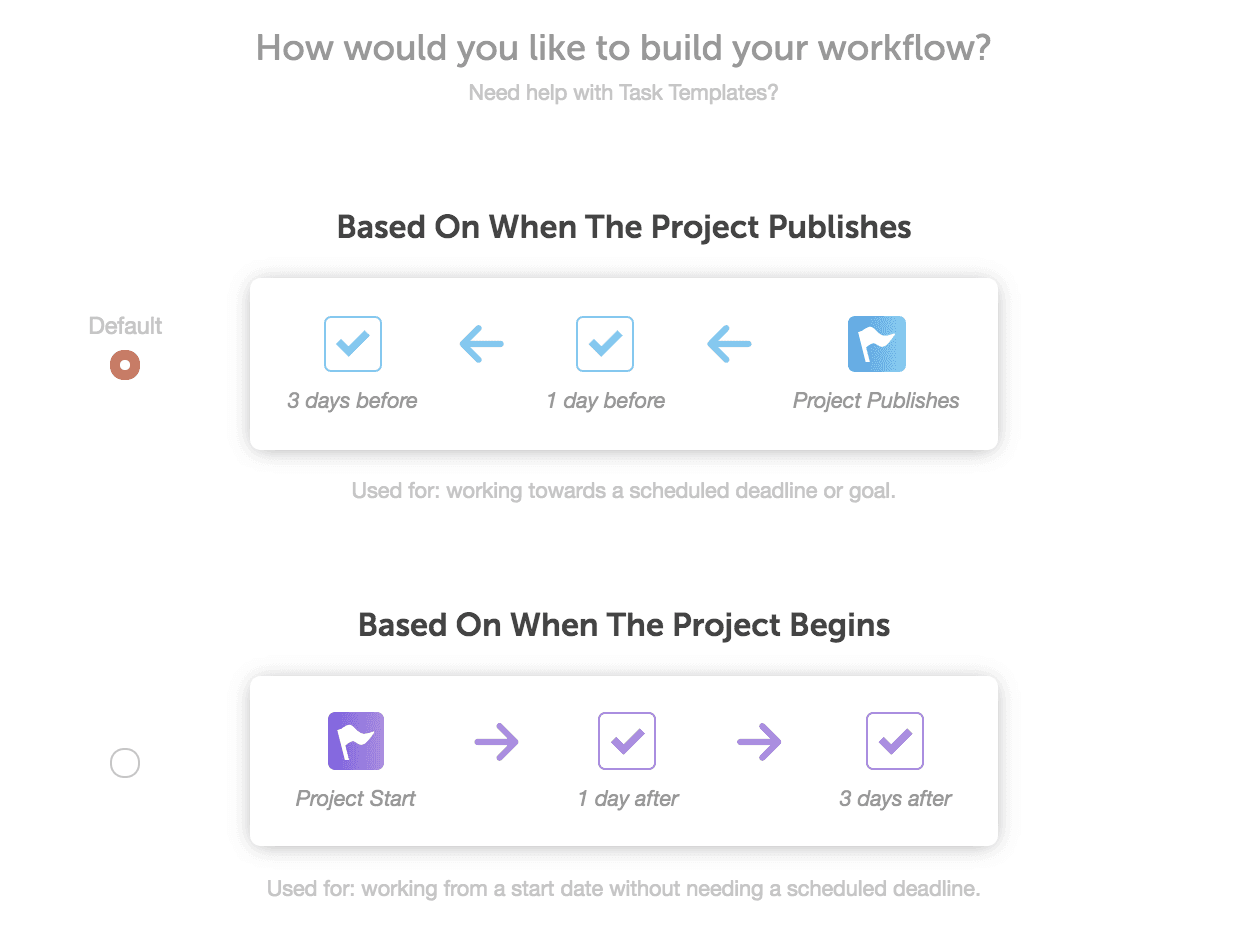
For example, due dates in checklist templates are relative, based on either the project start date or due date. This way, if you know it takes writers 5 days to create a draft and
a designer 2 days to create the images, you can plan this out accordingly in your template. Once you decide on the timeline once, the appropriate margins will automatically be built into your projects created from that template.

When you take into account a piece of content’s full timeline instead of just the publish date, you can create a marketing calendar that lets you see more accurately how much work each team member has on their plate at any given time. Then plan content accordingly.
Once you have these 3 basics covered—the what, when, and who—you’re ready to start putting your editorial workflow into actions.
However, you’re not “done” yet.
Step 4: Adjust and Optimize Regularly
Your first attempt at planning an organized workflow won’t be perfect. You may realize there are dependencies your team hadn’t identified yet, like that the social media manager needs finished graphics to start scheduling promotion.
Or you may realize that your time estimates are off, and that your team works faster and more productively than they’d originally estimated.
Workflows are like living things that you need to take care of over time.
You should build them knowing that you’re going to be adjusting and optimizing them, versus treating them like “one and done” projects.
Use
agile marketing principles to help you maintain your workflow.
For example,
daily standup meetings and weekly check-in meetings can help you see how your team moves content through the editorial workflow. They’re a good chance to identify any missing gaps in the process or bottlenecks in the timeline.
Your team might meet weekly to review your
marketing kanban board as a group, update all the projects that have made progress, and troubleshoot those that haven’t. It serves as a useful bird’s-eye-view of everything in progress that lets you easily make updates and changes.

In addition to those regular meetings, you can
hold retrospectives less frequently, like monthly or after each campaign. These are a great chance to zoom out of the day-to-day work and look at the workflow’s bigger picture, and make changes based on observations made in your check-in meetings.
For example, you may collectively decide to change how long a strategist reviews a post before publishing, or transfer ownership of writing Facebook copy from a writer to a social media manager.
Finding the perfect editorial workflow for your team, given their unique strengths and weaknesses and work styles, will be an ongoing process. If your first attempt isn’t perfect, don’t worry. You’re still making progress, you’re still doing moving in the right direction. But you need to make sure your team continues to do so.
Building in these meetings and systems for review ensures that you don’t neglect maintaining your workflows once they’re initially thought out.
Let the Work Flow
An ideal editorial workflow gives your team a clearer, more organized way to do the work they’re already doing. It should enable them to work quickly and efficiently and help the whole team do their best work.
But remember, finding the right one is an ongoing process so the sooner you start, the sooner you can find it. Get started today with our editorial workflow checklist you can customize for your own team.

 Have you ever fallen down the “How It’s Made” rabbit hole on YouTube? I have, several times.
It might seem weird to spend 30 minutes enthralled by how objects like pencils, ice cream sandwiches, and basketballs are manufactured. But as a marketing manager, there’s a lot you can learn from them about how literal well-oiled machines build new products.
Especially if you and your team ever get overwhelmed by how much editorial content you need to create each month.
Now, what does manufacturing have to do with marketing and creating content?
It’s all about the workflow.
The machinery in those videos are all custom-created and programmed to automatically churn out high quality products seamlessly. And just like them, your marketing teams needs to be able to seamlessly churn out high quality content that moves your business forward.
They key to doing that is creating a custom-fit editorial workflow for your own team.
In this guide, you’ll learn:
Have you ever fallen down the “How It’s Made” rabbit hole on YouTube? I have, several times.
It might seem weird to spend 30 minutes enthralled by how objects like pencils, ice cream sandwiches, and basketballs are manufactured. But as a marketing manager, there’s a lot you can learn from them about how literal well-oiled machines build new products.
Especially if you and your team ever get overwhelmed by how much editorial content you need to create each month.
Now, what does manufacturing have to do with marketing and creating content?
It’s all about the workflow.
The machinery in those videos are all custom-created and programmed to automatically churn out high quality products seamlessly. And just like them, your marketing teams needs to be able to seamlessly churn out high quality content that moves your business forward.
They key to doing that is creating a custom-fit editorial workflow for your own team.
In this guide, you’ll learn:

 It’s one thing to sit down and brainstorm an advanced, multi-channel content marketing strategy with big goals to drive big revenue for your business. It’s another to actually make it happen.
“Making it happen” is what your editorial workflow is for.
If you content marketing strategy is a map with your destination circled in thick red pen, your workflow is the turn-by-turn directions for getting there. The detailed stuff, like “make a slight right in 0.2 miles” that can be missed way too easily.
It’s one thing to sit down and brainstorm an advanced, multi-channel content marketing strategy with big goals to drive big revenue for your business. It’s another to actually make it happen.
“Making it happen” is what your editorial workflow is for.
If you content marketing strategy is a map with your destination circled in thick red pen, your workflow is the turn-by-turn directions for getting there. The detailed stuff, like “make a slight right in 0.2 miles” that can be missed way too easily.
 [Tweet "How to Plan an Effective Editorial Workflow in 4 Steps (Template)" by @thatbberg via @coschedule]
[Tweet "How to Plan an Effective Editorial Workflow in 4 Steps (Template)" by @thatbberg via @coschedule]
 But with 65% of respondents describing their marketing team as somewhat or very organized, there’s hope. It’s simply a matter of making the decisions now that will save your team time and energy later.
Here’s how to create the perfect editorial workflow to do that, one custom-made for your team and its goals.
But with 65% of respondents describing their marketing team as somewhat or very organized, there’s hope. It’s simply a matter of making the decisions now that will save your team time and energy later.
Here’s how to create the perfect editorial workflow to do that, one custom-made for your team and its goals.
 Marketing is so much more than simply publishing content, but many struggling marketing teams are only paying attention to the publish dates. This leaves team members scrambling to meet deadlines, no matter how far out the content calendar is planned.
Once your workflow is decided on, these small steps will become tasks and to-dos in your marketing calendar or project management system. For example, in CoSchedule you can create different task templates to quickly apply the editorial checklist to any relevant content projects:
Marketing is so much more than simply publishing content, but many struggling marketing teams are only paying attention to the publish dates. This leaves team members scrambling to meet deadlines, no matter how far out the content calendar is planned.
Once your workflow is decided on, these small steps will become tasks and to-dos in your marketing calendar or project management system. For example, in CoSchedule you can create different task templates to quickly apply the editorial checklist to any relevant content projects:
 Focus on identifying the tasks your team is already doing, not everything you could be doing. Remember, we’re organizing and optimizing your existing process before you try to scale up and start doing more.
Focus on identifying the tasks your team is already doing, not everything you could be doing. Remember, we’re organizing and optimizing your existing process before you try to scale up and start doing more.
 Additionally, you can also let team members know when work is coming down the pipeline towards them by sending notifications, making them the “project owner,” or tagging them in comments.
Additionally, you can also let team members know when work is coming down the pipeline towards them by sending notifications, making them the “project owner,” or tagging them in comments.
 For example, due dates in checklist templates are relative, based on either the project start date or due date. This way, if you know it takes writers 5 days to create a draft and a designer 2 days to create the images, you can plan this out accordingly in your template. Once you decide on the timeline once, the appropriate margins will automatically be built into your projects created from that template.
For example, due dates in checklist templates are relative, based on either the project start date or due date. This way, if you know it takes writers 5 days to create a draft and a designer 2 days to create the images, you can plan this out accordingly in your template. Once you decide on the timeline once, the appropriate margins will automatically be built into your projects created from that template.
 When you take into account a piece of content’s full timeline instead of just the publish date, you can create a marketing calendar that lets you see more accurately how much work each team member has on their plate at any given time. Then plan content accordingly.
Once you have these 3 basics covered—the what, when, and who—you’re ready to start putting your editorial workflow into actions.
However, you’re not “done” yet.
When you take into account a piece of content’s full timeline instead of just the publish date, you can create a marketing calendar that lets you see more accurately how much work each team member has on their plate at any given time. Then plan content accordingly.
Once you have these 3 basics covered—the what, when, and who—you’re ready to start putting your editorial workflow into actions.
However, you’re not “done” yet.
 In addition to those regular meetings, you can hold retrospectives less frequently, like monthly or after each campaign. These are a great chance to zoom out of the day-to-day work and look at the workflow’s bigger picture, and make changes based on observations made in your check-in meetings.
For example, you may collectively decide to change how long a strategist reviews a post before publishing, or transfer ownership of writing Facebook copy from a writer to a social media manager.
Finding the perfect editorial workflow for your team, given their unique strengths and weaknesses and work styles, will be an ongoing process. If your first attempt isn’t perfect, don’t worry. You’re still making progress, you’re still doing moving in the right direction. But you need to make sure your team continues to do so.
Building in these meetings and systems for review ensures that you don’t neglect maintaining your workflows once they’re initially thought out.
In addition to those regular meetings, you can hold retrospectives less frequently, like monthly or after each campaign. These are a great chance to zoom out of the day-to-day work and look at the workflow’s bigger picture, and make changes based on observations made in your check-in meetings.
For example, you may collectively decide to change how long a strategist reviews a post before publishing, or transfer ownership of writing Facebook copy from a writer to a social media manager.
Finding the perfect editorial workflow for your team, given their unique strengths and weaknesses and work styles, will be an ongoing process. If your first attempt isn’t perfect, don’t worry. You’re still making progress, you’re still doing moving in the right direction. But you need to make sure your team continues to do so.
Building in these meetings and systems for review ensures that you don’t neglect maintaining your workflows once they’re initially thought out.



